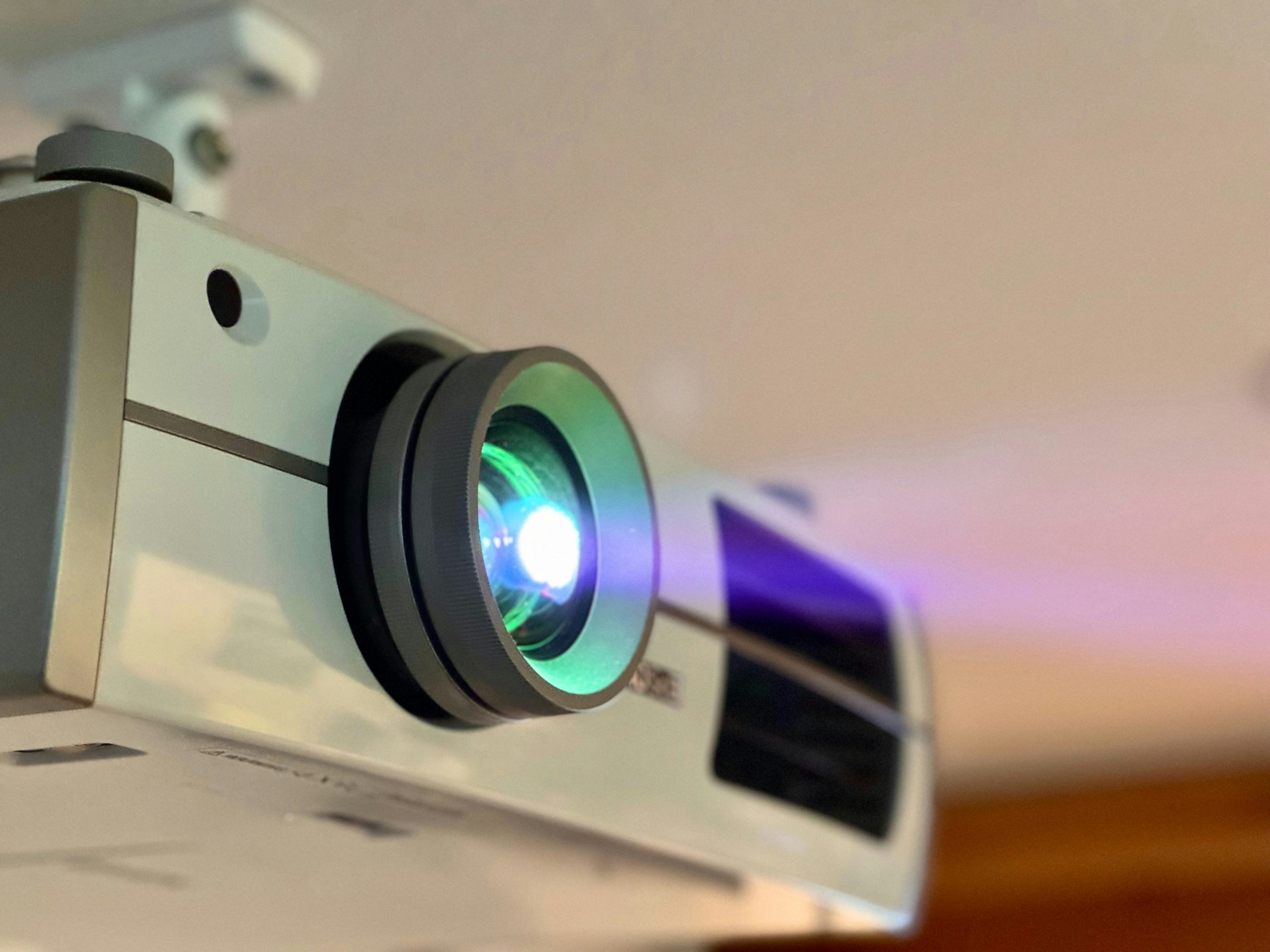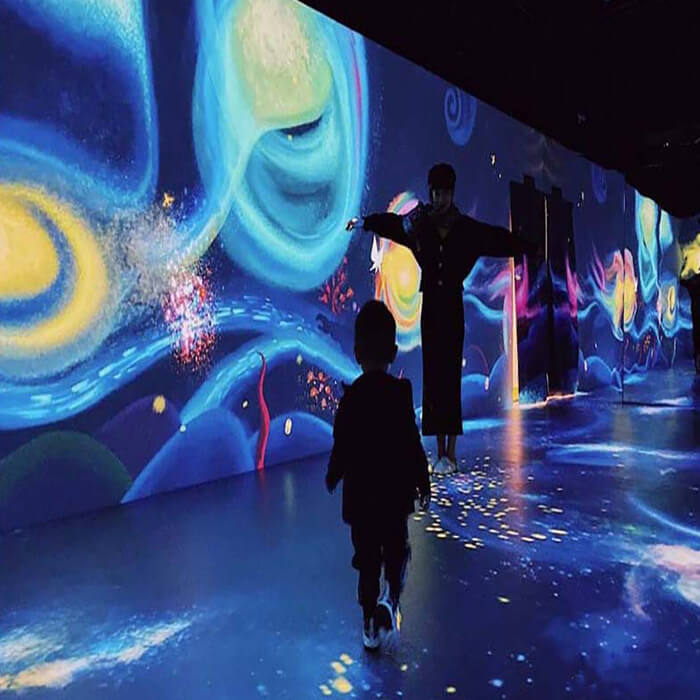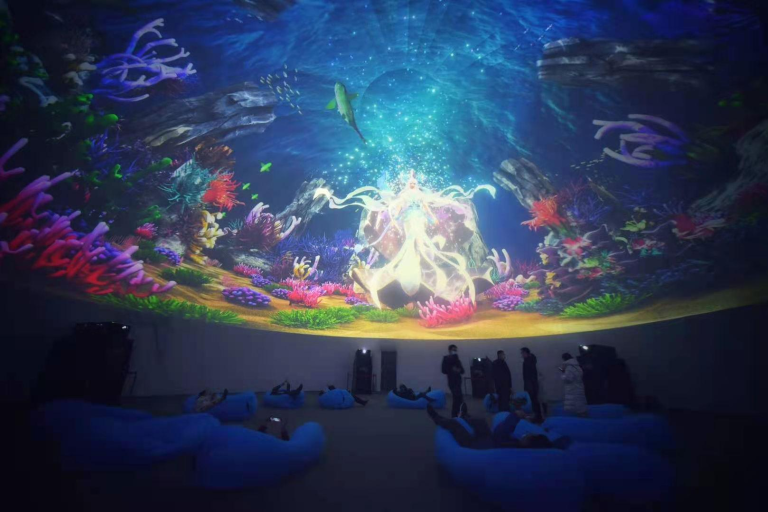Exploring LCD and DLP Projection Technologies: Which One Suits Your Needs Best?
With the rapid advancement of projection technology, LCD and DLP have emerged as two leading projection technologies, each with distinct advantages and applications. For consumers, understanding the core differences between these technologies is crucial for selecting the projector that best suits their needs. This article provides an in-depth analysis of the differences between LCD and DLP projectors, helping you make an informed purchasing decision.
Technical Principles of DLP and LCD Projectors
1. What Are The Imaging Principles of DLP and LCD Projectors?
Imaging Principle of DLP Projectors
The imaging principle of DLP projectors can be summarized as “using countless tiny mirrors to rapidly reflect light and project a clear image.” Its core component is the DMD chip, which contains millions of micro-mirrors, each corresponding to a single pixel. These mirrors can tilt at high speeds to control whether light is reflected onto the screen, thereby adjusting the brightness of the image and ensuring precise projection.
The projector’s light source (such as LED, lamp, or laser) first passes through a color wheel (for single-chip projectors) or a beam splitter (for three-chip projectors) to separate red, green, and blue light. The DMD chip then rapidly adjusts the mirrors based on the changing colors, sequentially projecting the three primary colors onto the screen. Since this process occurs at an extremely high speed, the human eye perceives a complete and seamless image despite the color display happening in steps.
Imaging Principle of LCD Projectors
The imaging principle of LCD projectors relies on controlling light through liquid crystal panels. First, the projector’s light source (such as LED, lamp, or laser) emits white light. This white light is passed through a specialized optical device that separates it into red, green, and blue light. Each color of light then passes through its respective liquid crystal display (LCD) panel, with each panel responsible for controlling one color of light.
The LCD panels are composed of thousands of tiny pixels, each capable of adjusting whether it allows light to pass through. This enables precise control of the brightness of each pixel, creating an image.
The images generated by the individual LCD panels are optically combined inside the projector and then magnified by the projection lens. The final image is projected onto the screen, resulting in the complete picture we see.
2. What Are The Key Differences in The Core Working Mechanisms of These Two Technologies?
The key differences in the core working mechanisms of DLP and LCD projectors mainly lie in their methods of light processing, imaging principles, and display technologies:
DLP Projectors
DLP projectors rely on DMD chips as their core technology. Each micro-mirror corresponds to a single pixel and rapidly tilts to reflect light, controlling the brightness of the pixel. The light source in DLP projectors is typically white light, which is split into red, green, and blue components using a spinning color wheel or handled separately by a three-chip system, eliminating the need for a color wheel. The red, green, and blue lights alternate rapidly on the screen to produce a complete color image.
DLP projectors excel in high contrast, quick response times, and smooth dynamic images, making them ideal for fast-moving content such as games or sports videos. However, single-chip DLP projectors may experience a “rainbow effect” (color separation), especially in high-contrast scenes.
LCD Projectors
LCD projectors control light transmission through liquid crystal panels. White light is first split into red, green, and blue components using a light-splitting system, and each color passes through a dedicated LCD panel. The liquid crystal molecules adjust their alignment based on changes in the electric field to either allow or block light, creating variations in brightness.
The advantages of LCD projectors include stable color performance and high color accuracy, making them well-suited for static images and document presentations. Since LCD projectors do not use a color wheel, they avoid the rainbow effect found in DLP projectors. However, LCD projectors have relatively lower contrast, shallower blacks, and less impressive performance for dynamic images compared to DLP projectors.
Comparison of Projector Image Quality Performance
1. Brightness Analysis
DLP Projector Brightness Characteristics
DLP projectors have a relatively lower light source utilization because the light passes through the micromirror matrix and color wheel, causing some light loss. As a result, their brightness is slightly lower than that of LCD projectors at the same light source power. However, DLP projectors enhance brightness perception through high contrast (deeper blacks and brighter whites), making images appear more vivid in darker environments. Despite this, DLP projectors perform less well in bright environments compared to LCD. Additionally, when using a color wheel, the color brightness in DLP projectors may be slightly lower than the white brightness, which can make the overall brightness feel weaker when displaying complex, colorful images.
LCD Projector Brightness Characteristics
LCD projectors have higher light source utilization, as the light is processed through splitting and liquid crystal panels, preserving the light intensity to the maximum. As a result, at the same light source power, LCD projectors are brighter, particularly in white scenes. Due to lower light loss, LCD projectors are ideal for high-brightness environments such as classrooms, conference rooms, and exhibitions, ensuring clear projection and vibrant colors. Furthermore, the color brightness in LCD projectors is nearly identical to the white light brightness, which makes the image appear brighter and more uniform when displaying both colored images and text.
2. Contrast Analysis
DLP Projector Contrast Characteristics
DLP projectors, using DMD chips, precisely control the micro-mirrors’ reflection, allowing them to reflect almost no light when fully closed, resulting in deeper blacks and higher contrast, especially in dark environments where they can present richer image depth. Many DLP projectors support dynamic iris technology, adjusting light source brightness based on the content of the image to optimize dynamic contrast and enhance dark details. The high contrast of DLP projectors makes them ideal for scenes requiring deep blacks and delicate lighting effects, such as home theaters, immersive projections, and dark environments.
LCD Projector Contrast Characteristics
LCD projectors generally have lower contrast because the liquid crystal panels cannot fully block light, resulting in some light leakage when displaying black. However, LCD projectors offer better uniformity in screen brightness and smooth color performance, making them more suitable for displaying bright images or text. In high ambient light conditions, LCD projectors perform well, and despite their lower contrast, their higher brightness ensures clear images, making them ideal for bright scenes.
3. Color Accuracy
DLP Projector Color Accuracy Characteristics
High-end DLP projectors, especially three-chip DLP projectors, perform excellently in color accuracy, making them suitable for scenarios that require high-quality color representation. Additionally, DLP technology performs exceptionally well with dynamic images, allowing for rapid color switching to ensure accurate color reproduction in dynamic scenes. However, single-chip DLP projectors may experience the “rainbow effect,” which can affect some users’ perception of color accuracy.
LCD Projector Color Accuracy Characteristics
LCD projectors typically offer more saturated and true-to-life colors, resulting in more vibrant images, especially suitable for displaying static images and colorful content. An additional significant advantage of LCD projectors is that their color brightness is consistent with their white brightness, ensuring clear and uniform color elements even in bright environments. This makes them particularly suitable for educational, exhibition, and business presentation settings. However, due to the lower contrast of LCD projectors, blacks are less deep, leading to slightly reduced dark area details and color depth compared to DLP projectors.
User Experience and Common Issues
1. Rainbow Effect in DLP Projectors VS Screen Door Effect in LCD Projectors
Rainbow Effect in DLP Projectors
El “rainbow effect” is a common visual issue in DLP projectors. When colors switch rapidly, some people may observe rainbow-like streaks or flickers. This phenomenon is particularly noticeable in high-contrast scenes and can affect the viewing experience. However, with continuous advancements in DLP technology, the issue of the rainbow effect is gradually diminishing.
Screen Door Effect in LCD Projectors
El “screen door effect” in LCD projectors refers to the visibility of pixel structures when the image is magnified, making the image appear as if it is overlaid with a mesh-like grid, which impacts viewing quality. This issue is more pronounced in LCD projectors with lower resolution or when projecting at closer distances. Nevertheless, with advancements in liquid crystal panel technology and improvements in resolution, the screen door effect has been significantly reduced.
2. Noise During Operation
DLP Projectors
DLP projectors produce relatively low noise during operation. Thanks to their compact structure and digital micromirror technology, they have lower cooling demands, resulting in quieter fan noise and a more serene viewing experience.
LCD Projectors
LCD projectors may generate more noise due to the cooling requirements of their liquid crystal panels and light sources. This is particularly noticeable in traditional lamp-based LCD projectors, where fan noise can be more prominent, potentially affecting the user experience in quiet environments.
3. Maintenance Requirements
DLP Projectors
DLP projectors feature a sealed DMD chip, making the internal micromirror array highly resistant to dust and environmental factors, resulting in excellent durability and stability. With a simple optical structure, DLP projectors have a lower failure rate and require minimal maintenance. However, the color wheel in single-chip DLP projectors is a mechanical component that may wear out or become damaged under prolonged heavy use, necessitating periodic inspection and replacement. Additionally, the projector’s light source must be replaced according to its lifespan, though laser light sources generally have a longer lifespan, reducing this concern. Overall, DLP projectors have low maintenance costs and frequency, primarily focusing on the upkeep of the light source and color wheel.
LCD Projectors
LCD projectors have higher maintenance demands due to the sensitivity of liquid crystal panels to dust and high temperatures. Over prolonged use, liquid crystal panels may experience color distortion, brightness decay, or light leakage, requiring regular cleaning and upkeep. Additionally, LCD projectors are equipped with air filters that must be cleaned or replaced periodically, as dust can hinder cooling performance, potentially causing overheating and damage to optical components. Since liquid crystal panels are susceptible to aging under high temperatures, they may need replacement after extended use, adding to maintenance costs. While the light source maintenance is similar to that of DLP projectors, maintaining the liquid crystal panels is more frequent and complex.
Application Scenarios of DLP Projectors And LCD Projectors
Ideal Scenarios for DLP Projectors
Based on the analysis above, DLP projectors are particularly suited for scenarios requiring high contrast and clarity, such as home theaters and high-end business meetings. Home theater enthusiasts often prioritize detailed image performance, and DLP projectors deliver an immersive viewing experience in dark environments with deep, rich, and layered colors. In high-end business settings, the clarity of DLP projectors ensures that important charts and images are displayed vividly, enhancing the effectiveness of business presentations.
Additionally, DLP projectors are ideal for scenarios requiring compact structure and portability, such as small business meetings or outdoor presentations. With their compact and lightweight design, DLP projectors are easy to carry and install, meeting the needs of versatile usage scenarios.
Ideal Scenarios for LCD Projectors
Based on the analysis above, LCD projectors are better suited for scenarios requiring high color accuracy and brightness, such as education and business presentations. Many schools use LCD projectors in classrooms to display engaging teaching content, where vibrant colors capture students’ attention and help them better understand the material. In business settings, LCD projectors can clearly present data and charts even in bright environments, greatly enhancing the effectiveness of meetings.
Additionally, LCD projectors are ideal for scenarios requiring excellent color reproduction, such as art exhibitions and painting lessons. They deliver more vibrant and true-to-life colors, making the images more vivid and captivating, which is particularly valuable for applications requiring precise detail reproduction.
Summary Comparison
| Item | DLP Projector | LCD Projector |
| Image Principle | Digital Micromirror Technology | Liquid Crystal Panel Controls Light Transmission |
| Brightness | Medium to High Brightness | High Brightness |
| Contrast | High Contrast Ratio | Medium to High Contrast Ratio |
| Color Accuracy | Realistic and True Reproduction | High Color Saturation and Accuracy |
| Rainbow Effect | May Exist | None |
| Screen Door Effect | None | May Exist |
| Noise | Relatively Low | May be Higher |
| Maintenance Needs | Relatively Low | Relatively High |
| Maintenance Costs | Medium to Low | Higher (Especially with Traditional Lamps) |
| Application Scenarios | High-Resolution Support | High-Resolution Support (Pay More Attention to Effectiveness in Use) |
In summary, DLP and LCD projectors each have their own strengths and weaknesses, making them suitable for different applications and requirements. When selecting a projector, it is essential to consider your actual needs, budget, and specific usage scenarios. By carefully weighing these factors, you can choose the device that best meets your needs and delivers the optimal performance.







